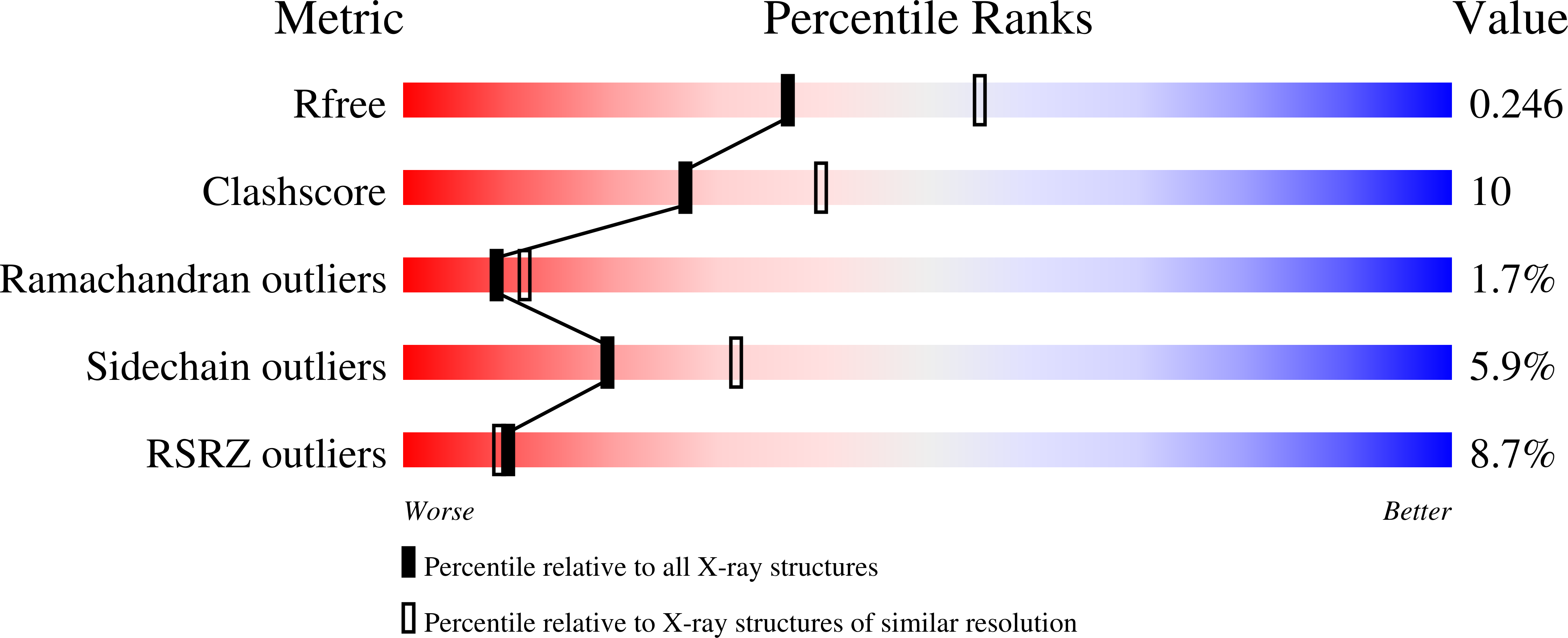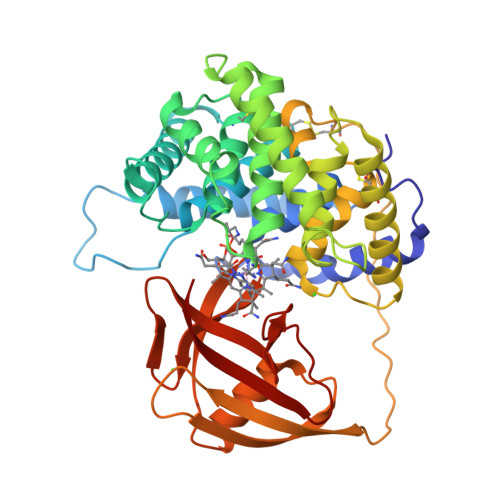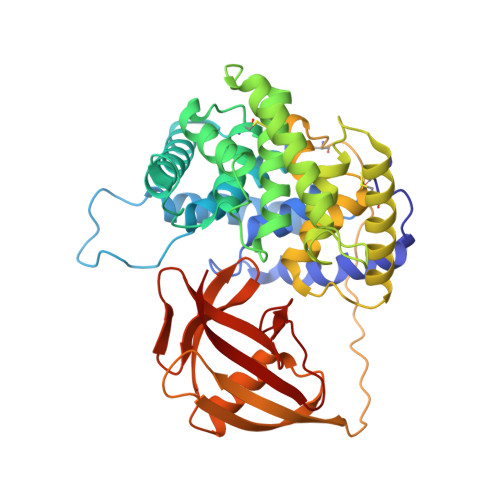Structural basis for mammalian vitamin B12 transport by transcobalamin.
Wuerges, J., Garau, G., Geremia, S., Fedosov, S.N., Petersen, T.E., Randaccio, L.(2006) Proc Natl Acad Sci U S A 103: 4386-4391
- PubMed: 16537422
- DOI: https://doi.org/10.1073/pnas.0509099103
- Primary Citation of Related Structures:
2BB5, 2BB6, 2BBC - PubMed Abstract:
Cobalamin (Cbl, vitamin B(12)) serves for two essential cofactors in mammals. The pathway for its intestinal absorption, plasma transport, and cellular uptake uses cell surface receptors and three Cbl-transporting proteins, haptocorrin, intrinsic factor, and transcobalamin (TC). We present the structure determination of a member of the mammalian Cbl-transporter family. The crystal structures of recombinant human and bovine holo-TCs reveal a two-domain architecture, with an N-terminal alpha(6)-alpha(6) barrel and a smaller C-terminal domain. One Cbl molecule in base-on conformation is buried inside the domain interface. Structural data combined with previous binding assays indicate a domain motion in the first step of Cbl binding. In a second step, the weakly coordinated ligand H(2)O at the upper axial side of added H(2)O-Cbl is displaced by a histidine residue of the alpha(6)-alpha(6) barrel. Analysis of amino acid conservation on TC's surface in orthologous proteins suggests the location of the TC-receptor-recognition site in an extended region on the alpha(6)-alpha(6) barrel. The TC structure allows for the mapping of sites of amino acid variation due to polymorphisms of the human TC gene. Structural information is used to predict the overall fold of haptocorrin and intrinsic factor and permits a rational approach to the design of new Cbl-based bioconjugates for diagnostic or therapeutic drug delivery.
Organizational Affiliation:
Centre of Excellence in Biocrystallography, Department of Chemical Sciences, University of Trieste, Via L. Giorgieri 1, I-34127 Trieste, Italy.




















